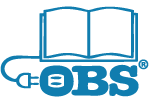The Human/Machine Interface (HMI) took its first steps decades ago in the form of crude WordStar spellchecker intrusions on our static documents. Now, the walk has picked up to a polka pace as publishing becomes a real-time, global interchange of ideas and information.
Medical publishing in particular pushes the pace towards an intimate pairing of human and machine. When published content integrates with medical Electronic Health Records (EHRs), for example, the borders around discrete publications dissolve: the machine accesses the content pool from any number of publications – standard references like Harrison’s Principles of Internal Medicine or Gray’s Anatomy — in a split-second (assuming, of course, that the purveyor of the EHR has purchased or contracted for access to the medical content). But the final determination of the validity of each selection of such content within a specific medical context is incumbent on human Subject Matter Experts (SMEs). Human publishing professionals validate translations, localizations, and variant spellings and usages over time to render such medical database content machine-ready. Furthermore, the human curation and disambiguation of the machine’s search results in turn help to train the machine to become an ever-refined resource.
Medical content evolves as science evolves. To keep the tempo accelerating, enter “change management,” what used to be annual errata cycles whereby medical publishers keep their content current. A new medical procedure or drug could save lives if that information is made available instantaneously. Upon receiving their medical license to practice, doctors vow “to do no harm,” and harm may come from withholding such a new procedure or drug once it is known and published about. The polka becomes a jig, for the human publishing staff at least, as the annual errata cycle is replaced by real-time updates in support of timely access to the latest life-saving information, to be implemented instantaneously in multiple translations, localizations, and in print and electronic formats.
Just as the boundaries between discrete publications dissolve online, so too emerges a blurry interface between people and the “machine’s” Large Language Models (LLMs) of Artificial Intelligence (AI) that process, “understand,” and generate human language in interfaces such as ChatGPT. These freely available AI programs generally have not had access to or been trained on copyrighted works such as the medical reference books cited above. Thus, a Subject Matter Expert managing curated content for inclusion in an Electronic Health Record would need access to a properly licensed, comprehensive online database library of medical content in order to do their job. If doing this work today, they would need to select the appropriate Artificial Intelligence Large Language Model program, situate it on a server in a “walled garden” removed from the free and open Internet in order to protect the copyright of that content, and train that LLM on the content so that AI, under human supervision, may offer life-saving, personalized medical content to our global population, wherever they live, in whatever language they speak.
Aspirational? Perhaps. Technologically possible today? Yes. Like any lively ballroom dance, this one involves trusted partners, lots of preparation and planning, and readiness to accept and trust life-saving information coming from machines that think but can’t breathe or empathize with the humans that both control and rely on them.
